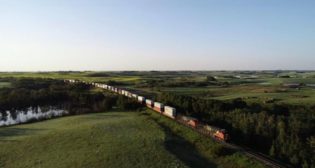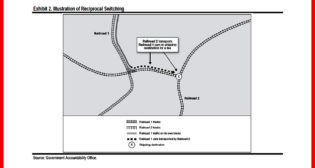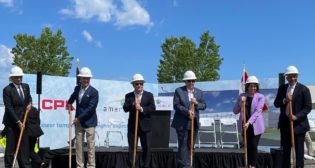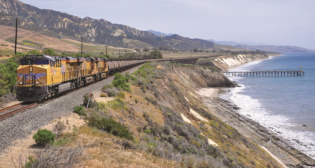
STB backs BNSF on coal dust issue
Written by Douglas John BowenThe Surface Transportation Board Tuesday, Dec. 17, 2013 said BNSF Railway has performed due diligence in minimizing or mitigating the generation of coal dust during rail movements, turning aside complaints from shippers and environmental groups claiming the railroad has been negligent.
In STB’s ruling Docket No. FD 35557 (labeled a “corrected decision”), decided Dec. 11, STB said it “finds the coal shippers challenging the safe harbor have not shown that the coal dust suppression methods set forth in the tariff are unreasonable. However, the Board finds unenforceable one provision regarding shipper liability for adverse impacts from any approved suppression methods because the language is overly broad and ambiguous.”
STB noted it “started this proceeding to give coal shippers the opportunity to challenge the “safe harbor” provision of a tariff change by the BNSF Railway Company (BNSF), which requires coal shippers to reduce the amount of coal dust lost from railcars during transit from mines in the Powder River Basin. The challenged BNSF safe harbor provision states that shippers will be in full compliance with coal loading requirements if they apply one of BNSF’s five approved suppression methods to their railcars after loading them pursuant to the profiling requirement. Alternatively, shippers may propose equally effective coal suppression methods for BNSF’s approval.”
Besides BNSF, parties involved included: Arkansas Electric Cooperative Corp. (AECC); the National Coal Transportation Association (NCTA); and Union Electric Co. D/B/A Ameren Missouri (Ameren Missouri). Union Pacific and the U.S. Department of Transportation also were involved.
Coal shippers objected to BNSF’s revising its tariff structure in July 2011 “which made several changes to the requirements regarding the control of coal dust emissions from trains loaded at mines in the PRB,” STB noted.
Shippers also objected to BNSF’s “safe harbor” provision requiring them to apply one of BNSF’s five approved suppression methods for coal dust, and also protested
a liability provision, in which BNSF said “topper agents, devices or appurtenances” used by shippers or their mine agents to control the release of coal dust “shall not adversely impact railroad employees, property, locomotives, or owned cars.”
STB in essence ruled that BNSF’s prescribed actions were reasonable measures to minimize coal dust fallout. “The shippers that are challenging BNSF’s tariff . . . bear the burden of proving that the tariff is unreasonable,” STB ruled.
STB also rejected shipper claims that an earlier ruling by STB on the subject was flawed and required review. “AECC and Coal Shippers have offered no basis to reconsider the Board’s prior finding,” STB stated, noting subsequent research “does not negate the Board’s finding that coal dust emissions were threatening ballast integrity. BNSF cannot change the soil composition along the PRB, but the amount of coal dust emitted from open-top railcars can be reduced.”
It added that test sample sizes for such a conclusion were “sufficient,” saying, “While the amount of coal dust collected from untreated cars showed large variability, the amount of coal dust collected from treated cars showed low variability. We find that the consistent results for treated cars indicate that a larger sample size was not necessary and that the approved topper agents performed well under a wide range of conditions.”
The full decision can be accessed at STB’s website.



